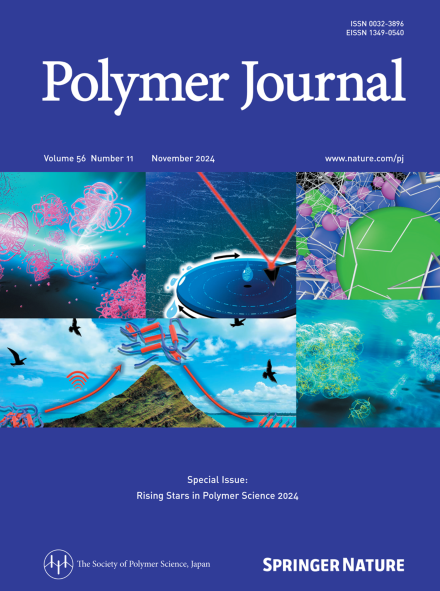Preparation and application of flexible carbon nanofiber membranes via electrospinning: from stress dispersion to multifunctionality
IF 2.3
4区 化学
Q3 POLYMER SCIENCE
引用次数: 0
Abstract
The ongoing surge in portable and smart device technology drives the need for materials that are both flexible and conductive. Owing to their high surface area and stability, carbon nanofibers (CNFs) are ideal for these applications. Electrospinning is a superior method for producing uniform CNFs with adjustable sizes, allowing for precise property control. The focus of this concise review is on enhancing the stress distribution and flexibility of electrospun CNFs, and the importance of optimizing pre-oxidation and carbonization to improve crystallinity and performance is emphasized. Physical stretching techniques and the addition of nanoparticles to create heterogeneous phases within the carbon matrix are discussed as the methods used to increase the mechanical properties of CNFs and develop porous structures. Additionally, the broad applications of flexible CNFs are outlined, and insights into current research and future prospects are provided, with an emphasis on the significance of CNFs in flexible material development. This review highlights key strategies to enhance the flexibility of carbon nanofibers (CNFs) and their applications. The preparation strategies encompass pore creation, nanoparticle doping, reaction process regulation, and tension stretching. These approaches are designed to refine the reaction process and bolster the physical characteristics of CNFs. The applications extend across supercapacitors to lithium-ion batteries, underscoring the versatile potential of flexible CNFs.

静电纺丝法制备柔性碳纳米纤维膜及其应用:从应力分散到多功能
便携式和智能设备技术的不断发展推动了对柔性和导电性材料的需求。由于其高表面积和稳定性,碳纳米纤维(CNFs)是这些应用的理想选择。静电纺丝是生产具有可调尺寸的均匀CNFs的优越方法,允许精确的性能控制。本文重点介绍了电纺丝CNFs的应力分布和柔韧性,并强调了优化预氧化和碳化对提高结晶度和性能的重要性。物理拉伸技术和添加纳米颗粒以在碳基体中产生非均相,作为用于增加CNFs机械性能和开发多孔结构的方法。此外,概述了柔性CNFs的广泛应用,并提供了对当前研究和未来前景的见解,重点介绍了CNFs在柔性材料开发中的重要性。本文综述了提高碳纳米纤维柔韧性的关键策略及其应用。制备策略包括孔隙创建,纳米颗粒掺杂,反应过程调节和张力拉伸。这些方法旨在改进反应过程并增强CNFs的物理特性。应用范围从超级电容器扩展到锂离子电池,强调了柔性cnf的多用途潜力。
本文章由计算机程序翻译,如有差异,请以英文原文为准。
求助全文
约1分钟内获得全文
求助全文
来源期刊

Polymer Journal
化学-高分子科学
CiteScore
5.60
自引率
7.10%
发文量
131
审稿时长
2.5 months
期刊介绍:
Polymer Journal promotes research from all aspects of polymer science from anywhere in the world and aims to provide an integrated platform for scientific communication that assists the advancement of polymer science and related fields. The journal publishes Original Articles, Notes, Short Communications and Reviews.
Subject areas and topics of particular interest within the journal''s scope include, but are not limited to, those listed below:
Polymer synthesis and reactions
Polymer structures
Physical properties of polymers
Polymer surface and interfaces
Functional polymers
Supramolecular polymers
Self-assembled materials
Biopolymers and bio-related polymer materials
Polymer engineering.
 求助内容:
求助内容: 应助结果提醒方式:
应助结果提醒方式:


